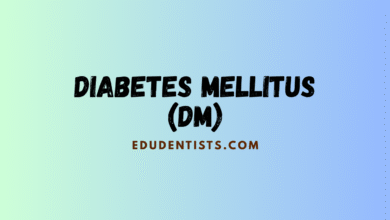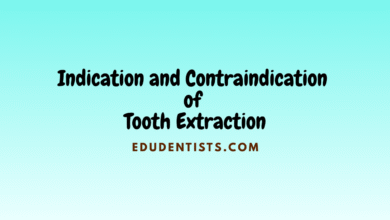Hypertension and Dental Care: A Complete Guide for Safe Treatment
Hypertension and Dental Care A Complete Guide for Safe Treatment

🩺 Hypertension and Dental Care: A Complete Guide for Safe Treatment 🦷📊
🔍 What is Hypertension?
Hypertension is a common cardiovascular condition defined as systolic blood pressure ≥140 mm Hg or diastolic blood pressure ≥90 mm Hg. It increases the risk of several serious conditions including:
- 💔 Myocardial infarction (heart attack)
- 🧠 Stroke
- 🧫 Renal (kidney) failure
- 🩸 Atherosclerosis
- 💥 Congestive heart failure
🔹 Systolic pressure: force during heart contraction
🔹 Diastolic pressure: force when the heart is relaxed
🧬 Causes and Risk Factors
Although the exact cause of hypertension is often unknown, it is closely linked to several lifestyle and health factors:
- 🚬 Smoking
- 🍔 High cholesterol
- ⚖️ Obesity
- 🍩 Diabetes mellitus
- 🛋️ Physical inactivity
- 🧪 Atherosclerosis
- 🧬 Kidney dysfunction (via vasopressin and fluid retention)
💊 Hypertension Management Strategies
📦 Lifestyle Modifications
✔️ Weight reduction
✔️ Dietary changes (e.g., DASH diet, low sodium)
✔️ Regular exercise 🏃♂️
✔️ Smoking cessation 🚭
✔️ Stress management 🧘♀️
💉 Pharmacologic Treatment (as per hypertension algorithm)
📌 Without Compelling Indications:
- Stage 1 HTN (140–159/90–99):
- Start with thiazide diuretics
- May use: ACEIs, ARBs, Beta blockers (BBs), CCBs
- Stage 2 HTN (≥160/≥100):
- Begin with two-drug combinations, usually thiazide + ACEI/ARB/BB/CCB
📌 With Compelling Indications:
- Use specific medications tailored to conditions like heart failure, post-MI, or diabetes
🔁 If blood pressure is not at goal:
- Titrate doses
- Add additional medications
- Refer to hypertension specialist if needed
📋 Classification of Blood Pressure & Follow-up Recommendations
| Classification | Systolic (mm Hg) | Diastolic (mm Hg) | Follow-up |
|---|---|---|---|
| Normal 🟢 | <120 | <80 | Recheck in 2 years |
| Prehypertension 🟡 | 120–139 | 80–89 | Recheck in 1 year |
| Stage 1 HTN 🟠 | 140–159 | 90–99 | Confirm within 2 months |
| Stage 2 HTN 🔴 | ≥160 | ≥100 | Evaluate/referral within 1 month; urgent if >180/110 |
🦷 Dental Treatment Guidelines Based on Blood Pressure
| BP Reading | Dental Care Allowed? | Follow-Up Action |
|---|---|---|
| ≤120/80 | ✅ All procedures allowed | No referral needed |
| 120–139 / 80–89 | ✅ All procedures allowed | Encourage physician follow-up |
| 140–159 / 90–99 | ✅ All procedures allowed | Physician follow-up recommended |
| 160–179 / 100–109 | ✅ Treatment with caution (monitor BP) | Refer within 1 month |
| ≥180/110 | ❌ Elective care deferred | Urgent referral required |
⚠️ Signs and Symptoms of Hypertensive Disease
🧪 Early Signs:
- Elevated BP readings 📈
- Retinal arteriole narrowing 👁️
- Headache 🤕
- Dizziness 😵
- Tinnitus 🔊
🧬 Advanced Signs:
- Retinal hemorrhage 🩸
- Papilledema
- Left ventricular hypertrophy
- Proteinuria 🧫
- Congestive heart failure 💔
- Renal failure
- Angina
- Dementia 🧠
- Encephalopathy
💊 Drugs Used to Manage Hypertension & Dental Considerations
Diuretics
- Thiazides (e.g., HCTZ): Dry mouth, lichenoid reactions
- Loop diuretics (e.g., furosemide): Monitor hydration
- Potassium-sparing (e.g., amiloride): Monitor potassium levels
Beta Blockers (BBs)
- Nonselective (e.g., propranolol): Avoid high-dose epinephrine, taste changes
- Cardioselective (e.g., metoprolol): Safe with dental anesthetics
ACE Inhibitors (e.g., lisinopril)
- May cause oral burning, angioedema of lips, taste changes
🦷 Dental Management Guidelines for Hypertensive Patients
⚠️ Drug Interactions
- Avoid erythromycin/clarithromycin with CCBs ❌
- Avoid long-term NSAIDs, especially with ACEIs/BBs
💉 Anesthesia Use
- Up to 2 cartridges of epinephrine (1:100,000 or 1:200,000) is safe if BP <180/110
- Avoid levonordefrin in uncontrolled hypertension
🧘 Stress Reduction
- Use oral or inhalation sedation if anxious
- Monitor BP intraoperatively if ≥160/100
🪑 Chair Positioning
- Avoid sudden position changes to prevent orthostatic hypotension
🩺 Emergency Preparedness
- Be alert for signs of MI, stroke, or arrhythmias
- Keep oxygen, nitroglycerin, and emergency contact ready
🔌 Pacemakers and Implantable Devices in Dentistry
- Devices include pacemakers and ICDs
- Function: Stabilize heart rhythm and store electrical activity data
- No significant interference with ultrasonic dental equipment reported
- No need for antibiotic prophylaxis for pacemakers
✅ Summary
Managing dental care in patients with hypertension requires:
- Understanding BP classifications 📊
- Recognizing symptoms early 🧠
- Adapting dental procedures accordingly 🦷
- Being cautious with certain drugs and anesthesia 💊
- Coordinating with physicians for high-risk cases 👨⚕️
Maintaining a safe and stress-free dental environment can prevent serious complications and ensure excellent patient outcomes.



